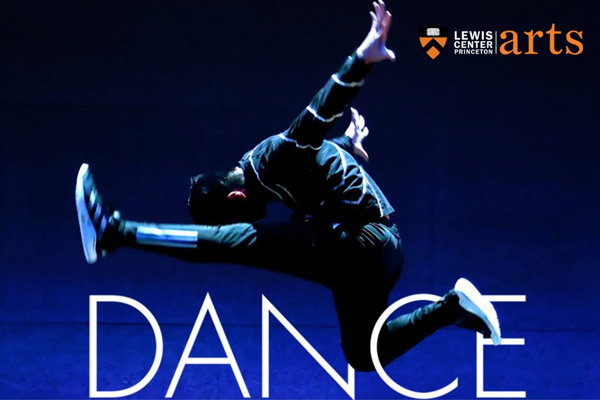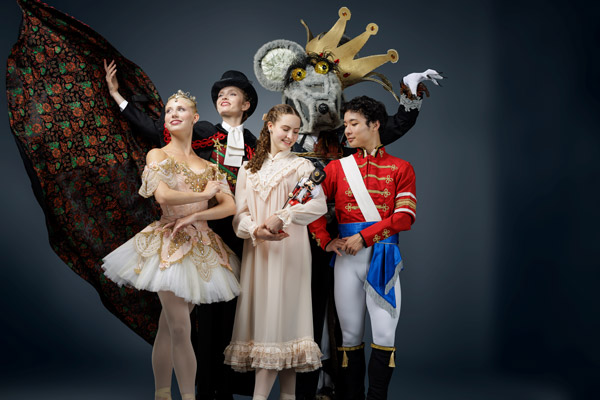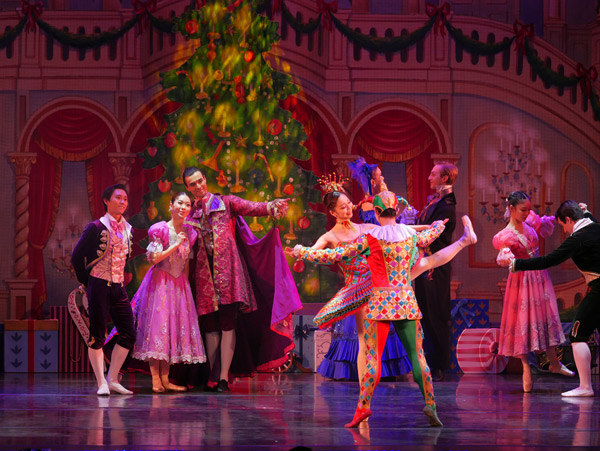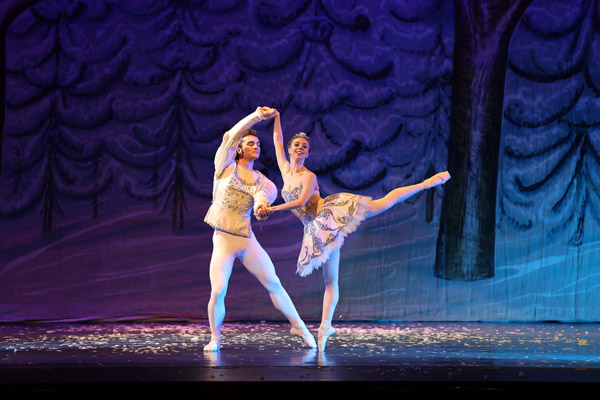By Gary Wien
originally published: 12/19/2014
For the second straight year, the Dance Theatre of Harlem has been chosen to headline NJPAC's annual Rev. Dr. Martin Luther King, Jr. Celebration. The event on Friday, January 16 pays tribute to the life and legacy of one of the 20th century's most inspiring leaders. In addition to the dance performance, Rev. Jerry M. Carter, Jr., pastor of Calvary Baptist Church in Morristown, will be the guest speaker.
The Dance Theatre of Harlem was founded by Arthur Mitchell, a legend in the dance world. Known as an accomplished artistic director, astute educator, talented choreographer, and extraordinary dancer, Mitchell was born in New York City in 1934. He began his dance training at New York City's High School of the Performing Arts, where he was the first male student to win the coveted Annual Dance Award. Mitchell continued his classical training when he received a full scholarship to the School of American Ballet. In 1955, he was the first African-American male to become a permanent member of a major ballet company when he joined the New York City Ballet. Upon learning of the death of the Rev. Dr. Martin Luther King, Jr. in 1968, Mitchell was inspired to provide children - especially those living in Harlem- with the opportunity to study dance. During the summer of 1968, he began teaching classes in a remodeled garage. In 1969, with financial assistance from Mrs. Alva B. Gimbel, the Ford Foundation and his own savings, Mitchell founded Dance Theatre of Harlem with his mentor and ballet instructor Karel Shook.
"In terms of the origins, the Dance Theatre of Harlem was born out of the crucible of the civil rights movement and Arthur Mitchell being inspired by the loss of Dr. King to return to Harlem and start the company to give opportunities to young people in that community," explained Keith Saunders, Ballet Master at the Dance Theatre of Harlem. "To make that history real for a new generation — not only of our dancers but for a new generation of audiences coming to see us — is very special and very poignantly tied to the Dr. King holiday."
The evening program for January 16 consists of three ballets from the company's repertoire. They will be performing Agon, a ground-breaking 1957 collaboration between two monumental 20th-century artists, choreographer George Balanchine and composer Igor Stravinsky. Agon is universally regarded as a masterwork that redefined ballet in its time. In Agon, (ancient Greek for contest), 12 dancers perform a series of solos, duets, trios and quartets based on 17th-century French court dances. DTH Founder and Artistic Director Emeritus Arthur Mitchell danced the central pas de deux in Agon at the ballet's premiere.
They will also be performing Past-Carry-Forward which features choreography by Tanya Wideman-Davis and Thaddeus Davis set to music by Willie "The Lion" Smith and SLIPPAGE (Thomas F. DeFrantz and Jamie Keesecker). This work takes a look at the legacy of the great migration of African Americans from the agrarian South to the industrial North in the early part of the twentieth-century. The migration forced many young African Americans into difficult situations, making choices to leave family at home in the South while they searched for the promise of a better life in the North. The Harlem Renaissance, the African American presence in a segregated military, working in the segregated service industry as Pullman railroad porters and as entertainers to white American audiences are also considered in the work.
The last ballet in the program is entitled Return, which is a rousing blend of the elegance of classical ballet and the gritty drive of soul music. This work features choreography by Robert Garland set to the music of Aretha Franklin and James Brown. Garland pushes the boundaries of ballet technique and form, incorporating and blending vernacular movement from the African American experience. From Pas de Bouree to the Cabbage Patch, Ballone to the bump, the ballet fulfills Dance Theatre of Harlem's idea of what it means to be "Classically American."
Last year's MLK Celebration signified the return of the Dance Theatre of Harlem to NJPAC for the first time in a decade. In addition to the evening program, the company will also be doing a mini performance designed for school children in the early afternoon. It's something they do in almost every city they visit.
"In our touring we often offer lecture demonstration performances and other educational activities in which we'll either bring the kids into the theatre or go into their schools to deliver the educational service whether it's an athletic workshop, a movement class, or whatever the case may be," explained Saunders. "That's been part of the Dance Theatre of Harlem's mission since the inception. To make this art form accessible and available to anyone who wants to see it, particularly those who may not have had the opportunity previously. We take that mission very seriously — to get people into the theatre, to see and experience what we do, and hopefully get them hooked for life. The idea is to provide the opportunity for the young people to perhaps see a different possibility than they might have imagined before."
Gary Wien has been covering the arts since 2001 and has had work published with Jersey Arts, Upstage Magazine, Elmore Magazine, Princeton Magazine, Backstreets and other publications. He is a three-time winner of the Asbury Music Award for Top Music Journalist and the author of
Beyond the Palace (the first book on the history of rock and roll in Asbury Park) and
Are You Listening? The Top 100 Albums of 2001-2010 by New Jersey Artists. In addition, he runs New Jersey Stage and the online radio station
The Penguin Rocks. He can be contacted at
gary@newjerseystage.com.
FEATURED EVENTS
Narrow results by date, categories, or region of New Jersey.
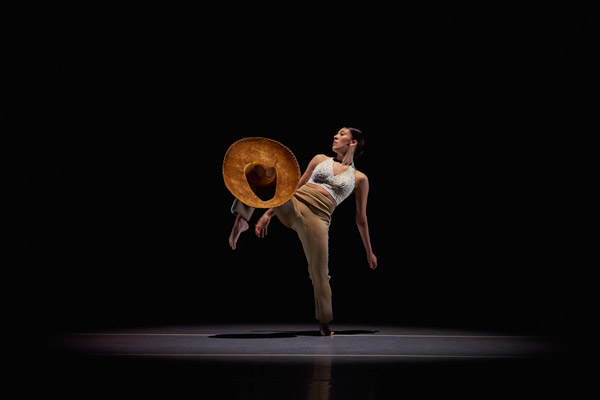
Fall Dance Plus
Thursday, November 21, 2024 @ 7:30pm
New Brunswick Performing Arts Center (NBPAC)
11 Livingston Avenue, New Brunswick, NJ 08901
category: dance
View event page for full information
2024 Princeton Dance Festival
Friday, November 22, 2024 @ 8:00pm
McCarter Theatre Center (Berlind Theatre)
91 University Place, Princeton, NJ 08540
category: dance
View event page for full information
Fall Dance Plus
Friday, November 22, 2024 @ 7:30pm
New Brunswick Performing Arts Center (NBPAC)
11 Livingston Avenue, New Brunswick, NJ 08901
category: dance
View event page for full information
More events
Event Listings are available for $10 and included with our banner ad packages
UPCOMING EVENTS
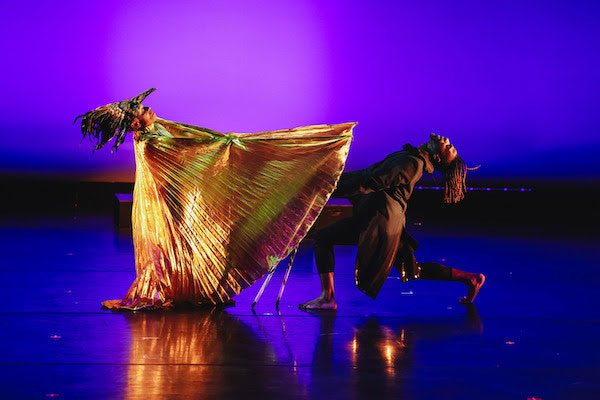
NJPAC presents dance performances by Malevo, the Hip Hop Nutcracker, State Ballet Theatre of Ukraine, and Forces of Nature
(NEWARK, NJ) -- New Jersey Performing Arts Center presents a plethora of dance performances as part of the m&t bank dance series. The series includes performances by Malevo, the Hip Hop Nutcracker, State Ballet Theatre of Ukraine, and Forces of Nature.


